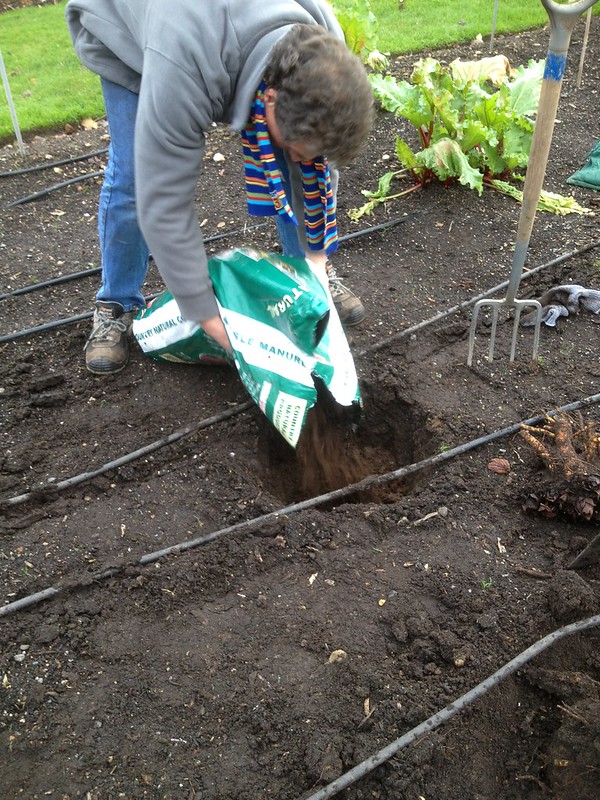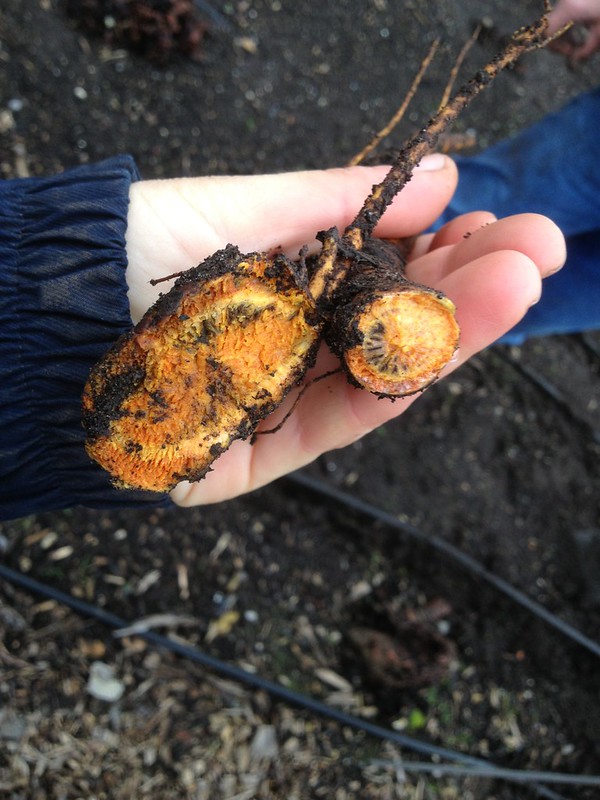Autumn is best, because if you plant rhubarb in the spring, you are then required to keep watering the new plant to help its establishment.
 |
| Adding manure to the hole |
Then one has to decide whether to lift a crown or only slice a portion off: that depends on the size of the crown itself. A large crown will tend to die and produce weaker buds in the centre, so you can slice an external portion, including one or more vigourous buds, without lifting the whole lot. But a smaller crown needs lifting before dividing - that might also be the case if you have to check for pests in between the roots, i.e. weevil grubs.
 |
| Clean the crown of any broken roots |
The crown is best divided to some 20 cm, with more than one good bud, so that the new plant does not take too long to establish to a good size. Once you have divided it to the right size, you need to clean the fleshy roots (in autumn all of the fine roots will have died down and you are only left with the storage roots) to be sure you take away any broken bits. In fact, those will rot in the ground and may affect the health of the new plant. If you are lifting a crown to split it, it might be worth to save any spare buds and pot them up as a spare plant. But never leave it the pot more than one year, as rhubarb roots like to spread.
 |
| Give the plant a good shake |
 |
| Firm the soil |
Job done! The next thing is to mulch the soil just as they break bud in the spring, to keep moisture in the soil. That's a delicate job: too early and you trap cold in the soil, too late and the leaves coming out will now allow you to mulch to the ideal distance from the buds: 15 cm or so, so you won't retain enough moisture where it is needed.
But down to my rhubarb meditations.
 |
| Rhubarb's fleshy roots |
So I should be happy that in the Cottage Garden there are several rhubarb plants, 7 or so, in two different places. However, they take up a lot of space, as their leaves can grow to 1 m (which is also the ideal planting space). How to get them to fit into the new design nicely?
Should they be together in one place, and would it look good enough, a large patch of rhubarb, in the summer and as it gradually dies back in the autumn? Should I interplant with some bulbs, for spring colour while the plants are still dormant? Or if I scatter them in the area, would that look better?
I am still divided about it.
No comments:
Post a Comment